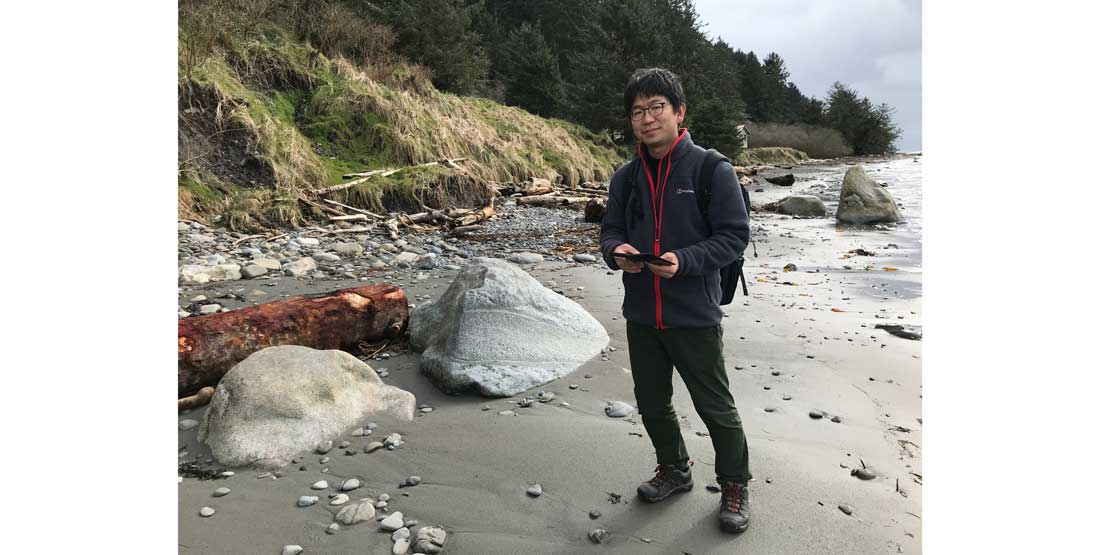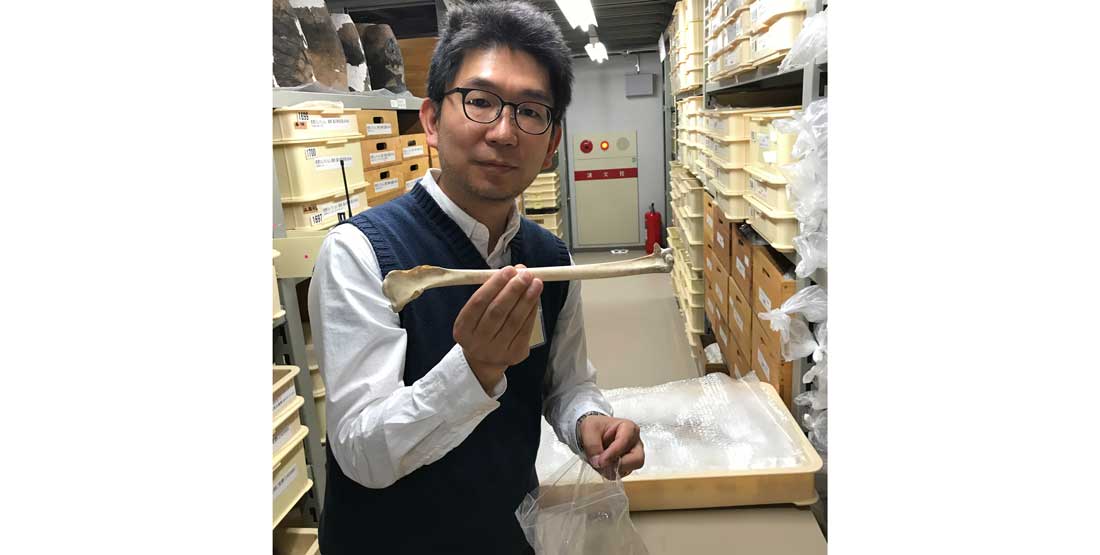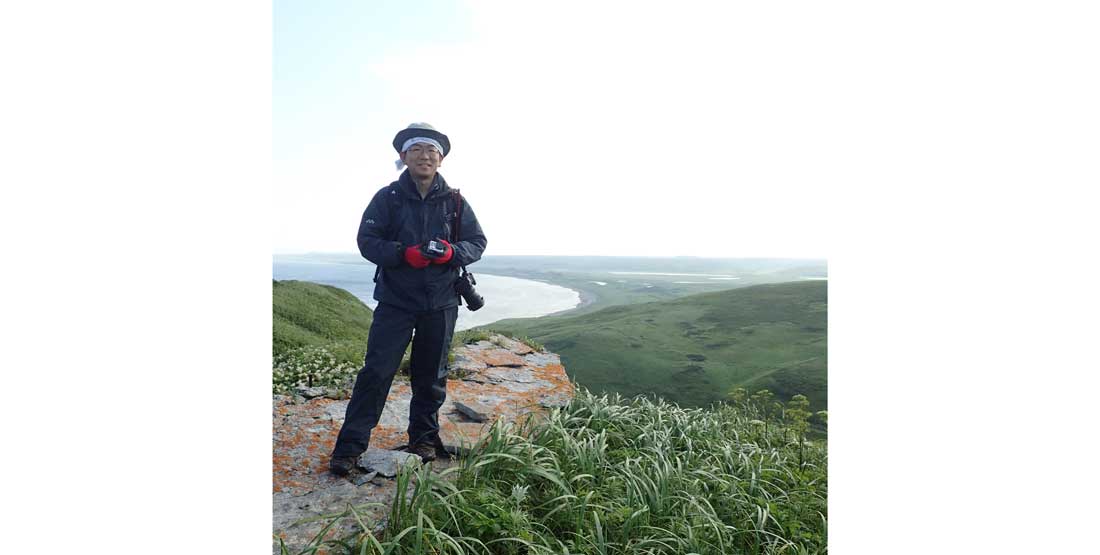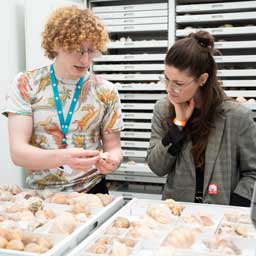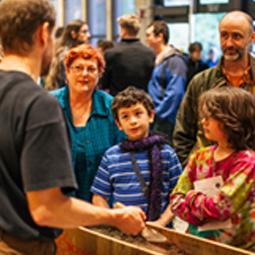Since 2017, Dr. Takase has been visiting the Burke to study animal bones from archaeological fieldwork expeditions in the 2000s (KBP) and 2016 (a follow up study called the “Kuril Ainu Project”). He returns this month to continue his research, focusing on bones of sea mammals and sea birds from the earlier project. His work this fall also includes organizing these materials, which constitute the most extensive collection of zooarchaeological remains from the Kuril Islands in the world.
In collaboration with several scholars in Japan and the United States, each of whom will conduct different analyses, Katsunori will investigate the paleoecology (environmental conditions at the time) as well as the human use of sea mammals and sea birds in the Kuril Islands. This approach can help archaeologists answer questions like, “What were people eating?” and “How did human activity impact the population of these species?”
As stewards of archaeological collections, we do everything in our power to preserve and protect the materials in our collections, but sometimes destructive analysis is the only way researchers can conduct meaningful analysis. Ensuring access to our collections while maintaining the highest standard of care for archaeological materials is a delicate balancing act. We’re hopeful that advancements in science and technology will reduce the need for destructive methods in the future.
We asked Dr. Takase a few questions about his research. Read on to learn more.
When did you become involved in archaeology in the Kuril Islands?
In 2015, after meeting Prof. Ben Fitzhugh from the University of Washington at a workshop, I began planning fieldwork in the Kuril Islands and, in 2016, in collaboration with the Sakhalin Regional Museum and the UW, we conducted excavations in the Northern Kurils. The faunal (animal) remains obtained through this work were transferred to the Burke Museum in 2019, just like the KBP collections, and they now constitute part of the world’s largest archaeofaunal collection from the Kuril Islands.
What have you learned while working with such a diverse team of scholars?
Between 2017 and 2018, I conducted basic research (photography, 3D scanning) on the KBP collections at the Burke Museum to reconstruct past economies in the Kurils. During this stay, while interacting with many archaeologists from various countries, I was deeply struck by the way faunal remains excavated from archaeological sites in North America are actively used not only to reconstruct human history but also to study the histories of animals and ecosystems. In Japan, it is considered “appropriate” to use animal and plant remains from sites solely for reconstructing human history, while their use for reconstructing the histories of animals or plants themselves is deemed “inappropriate.” Because archaeology is regarded as a branch of history, the prevailing view in Japan is that archaeological materials must be used for reconstructing human history. In contrast, in North America, researchers are more flexible in their thinking, and it is not unusual for archaeological materials to be used directly for understanding animals and ecosystems. Indeed, faunal remains from archaeological sites can serve as biological specimens dating back hundreds to thousands of years, which ecological researchers could never otherwise access. I realized that such specimens still hold untapped potential. Biological samples spanning millennia can reveal changes in animal foraging and reproductive behavior, ranges and migration routes, and the ecosystems they inhabit. Because the integration of ecology and archaeology can open new scholarly frontiers, after returning to Japan, I began developing research that incorporated this North American perspective on the western side of the North Pacific. This does not mean that I disregard archaeological remains as evidence for human history. Since animal remains found at sites are there because humans intentionally hunted or captured them, understanding the ecology of those animals and the surrounding ecosystems should provide positive feedback to our understanding of human history as well.
Why are the Burke’s collections so important to your research?
The faunal remains from the Kuril Islands housed at the Burke Museum represent the largest such collection in the world. Moreover, they are comprehensive not only in including mammals but also fish and shellfish, collected across the entire archipelago. No such collection exists in either Russia or Japan. The Kurils are an extremely difficult region to survey for various reasons, and even if one could reach the islands, it is uncertain whether satisfactory fieldwork could be conducted given the natural conditions. For me, being able to work with systematically and comprehensively collected materials from such a difficult-to-study region, all housed within a single museum, is nothing but a stroke of good fortune.
